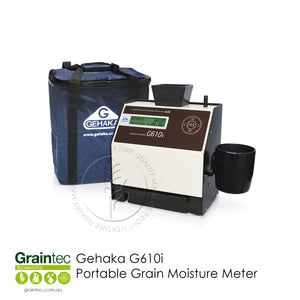Harvesting Grain: Essential Tips for Optimal Results

Harvesting grain is a critical time for farmers, where the right decisions can make a significant impact on the quality and profitability of their yield. To ensure a successful harvest, it's essential to understand the signs of ripeness, accurately measure moisture content, calibrate equipment, monitor weather conditions, and assess the threshing result. A recent article from Agrarheute, explores six practical tips that can help farmers achieve optimal results and maximise their harvest.
Quickly check grain with a thumbnail sample
At the start of the harvest, determining the proper ripeness of grain is crucial. Farmers can use the thumbnail test to assess the stages of development, from milk ripeness to dead ripeness. However, for precise measurements, using a mobile moisture meter is recommended.
Measure the moisture content at the edge of the field correctly with several samples
A high-quality moisture meter is invaluable in determining the moisture content of grain before harvest. By taking multiple samples from different areas of the field, farmers can obtain an average value, enabling them to make informed decisions about the right harvest date.
Calibrate the accuracy of the mobile moisture meter
To obtain reliable results, it's essential to use representative and clean samples when measuring moisture content. Additionally, regular calibration of the moisture meter ensures accurate readings, reducing any potential discrepancies.
Act correctly when bad weather threatens
Considering weather forecasts is vital during harvest time. If there is a risk of rain during the late yellow ripening stage, it's advisable to harvest before precipitation. In case the grain is harvested with higher moisture content, immediate ventilation or drying is necessary to maintain quality.
Also pay attention to straw ripeness
Monitoring the moisture content of straw is equally important, as unripe straw can cause issues during combine threshing. Maintaining uniform ripening and considering additional shots are crucial for a smooth harvesting process.
Check the threshing result
Unequal fields or different varieties require proper adjustment of the combine harvester. Threshing losses, cleaning losses, and grain breakage can occur if the machine is not optimised. Regular visual checks and adjustments are necessary to achieve optimal threshing results.
Harvesting grain successfully requires careful attention to detail and proactive decision-making. By following these tips, farmers can improve their harvest outcomes, minimise losses, and optimise the quality of their yield. Implementing these practices will not only enhance profitability but also contribute to the long-term success of their agricultural operations.
Products





